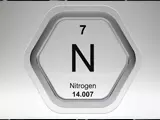Crystallization Process Control
The process of crystallization is one of the most important steps in pharmaceutical product manufacturing. This process is used to produce and purify pharmaceutically active compounds and is used in the production of active pharmaceutical ingredients (API), finished dosage form, and active ‘chemicals. On the other hand, it is also used to purify waste streams. The process of crystallization is the separation of the solids from the solution by withdrawing the solids portion of the solution. The process of crystallization can be controlled by regulating the temperature, agitation, supersaturation, and composition of the solution.
Crystallization process control is an important factor in achieving the desired end product. The crystallization process involves the formation of crystals from a liquid, either by cooling or by solvent evaporation. In order to control the crystallization process, there are several parameters that can be manipulated. The parameters used to control the crystallization process are the temperature, the supersaturation, and the agitation of the solution.
The temperature of the crystallizing solution plays an important role in the overall crystallization process. As the temperature of the solution decreases, the supersaturation increases, resulting in an increase in the amount of crystallization. If the temperature of the solution is too high, then post-crystallization degradation can occur.
Supersaturation is another important parameter for controlling the crystallization process. The supersaturation of the solution is a measure of the amount of solute in the solvent. If the solute concentration exceeds the solubility of the solute, the solution is said to be supersaturated. The higher the supersaturation, the greater the likelihood of crystallization occurring.
Agitation is another parameter used to control the crystallization process. Agitation is the physical process of moving the solution, generally changing or moving the orientation of the molecules in the solution. The agitation rate may affect the size, shape, and size distribution of the crystals that form.
Other techniques that may be used to control the crystallization process include seeding the solution with crystals, and using a seeded growth process. Seeding involves the addition of fine crystals to a supersaturated solution which accelerates the crystallization process, and improves the controlled size, shape, and size distribution of the crystals. Seeded growth techniques are used to increase the size of the particles in a controlled manner.
It is important to remember that the crystallization process can significantly affect the quality of the finished pharmaceutical product. Therefore, controlling the crystallization process is essential to attain the desired quality. Temperature, supersaturation, and agitation control can be used to control the crystallization process. Seeding and seeded growth techniques can also be used to improve the crystallization process. The correct implementation of these techniques can enable production efficiency gains, enabling the processing of larger volumes of product.






